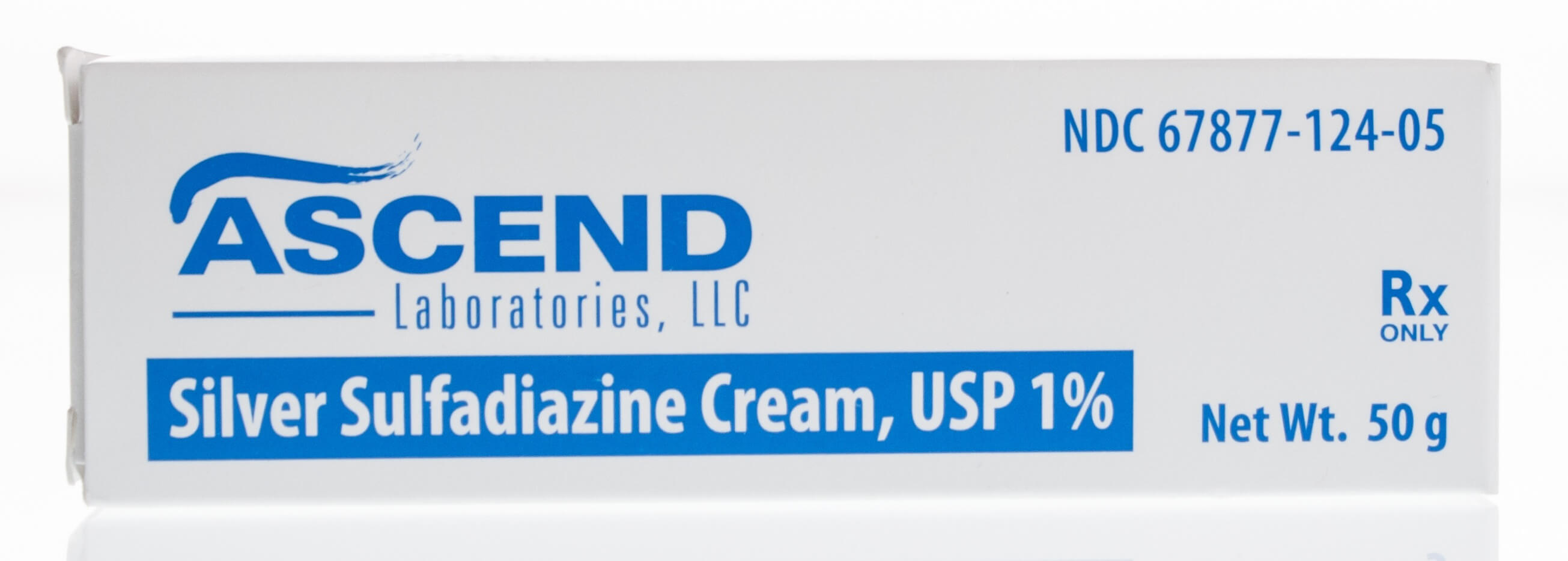
Most studies are conducted on splitl-thickness burns. 3 However, these adverse effects are considered rare, so silver sulfadiazine is considered a safe drug.

With the use of silver sulfadiazine severe cutaneous drug reactions have also been described, such as Stevens-Johnson syndrome. In addition to the potential accumulation of silver in different organs, sulfadiazine could produce blood alterations such as methemoglobinemia, haemolysis, leukopenia or hyperbilirubinemia. In order to avoid the possible effects of systemic absorption of silver sulfadiazine, it is necessary to avoid its application in very extensive wounds during prolonged periods of time, especially in patients with renal or hepatic insufficiency. Nitrofurazone is another topical antibiotic widely used in burns and other wounds, which dermatologists know well because it is also responsible for many hypersensitivity reactions. This adverse effect is confirmed by epicutaneous tests (patch test). 2 If a wound worsens after starting treatment with silver sulfadiazine, with increased pain, exudate, and perilesional redness, it may be clinically suspected. 1 Allergic contact dermatitis from silver sulfadiazine, either by allergic reaction to silver or sulfadiazine, is not uncommon. Returning to the specific topic of silver sulfadiazine, harmful effects on healing have been shown in vitro and in vivo, such as altered activation of macrophages and cytotoxicity on keratinocytes and fibroblasts. In chronic wounds, in addition to not having a clear effect on bacteria organized and protected in biofilms, they can produce bacterial resistanceand trigger allergic reactions. In fact, in clean acute wounds, such as those secondary to dermatological procedures, although the use of topical antibiotics is not indicated, it is a very widespread practice (see post: “ How do we manage clean wounds produced after dermatological procedures?“). I imagine that many of you will already have the following question in your head…īut is it advisable to apply topical antibiotics on wounds?Īlthough they are commonly used in acute and chronic wounds, the available evidence does not allow us to recommend them. The general recommendation is to apply it daily after cleansing the wound to avoid the formation of a pseudo-scab. Its usual presentation is cream, at a concentration of 1%.

In short, it is a mixture of a topical antibiotic with silver. Therefore, when combined in a cream, the bacteriostatic power of sulfadiazine and the silver bactericide effect act in synergy. it prevents the reproduction of bacteria by interfering with their folic acid synthesis.

This chemical has a bacteriostatic action, i.e. Sulfadiazine is a type of sulfamide, known traditional broad-spectrum antibacterial(Gram +, Gram – including Pseudomonas, anaerobes).
SILVER SULFADIAZINE CREAM SKIN
We have already dedicated a post to silver ( “Silver in skin wounds”). Silver sulfadiazine is a combination of silver nitrate and sulfadiazine, so its bacterial effects are due to the action of these two active principles. Although it is a product that I do not use in my clinical practice, its presence in various presentations during the Journées Cicatrisations 2019 has encouraged to dedicate a post to it:) It seems that the opinion of professionals on this product is divided into two camps: supporters and detractors.

Silver sulfadiazine cream (better known by its commercial names) remains, since the 70s, in the top of products used in wound healing, predominantly in superficial burns.


 0 kommentar(er)
0 kommentar(er)
